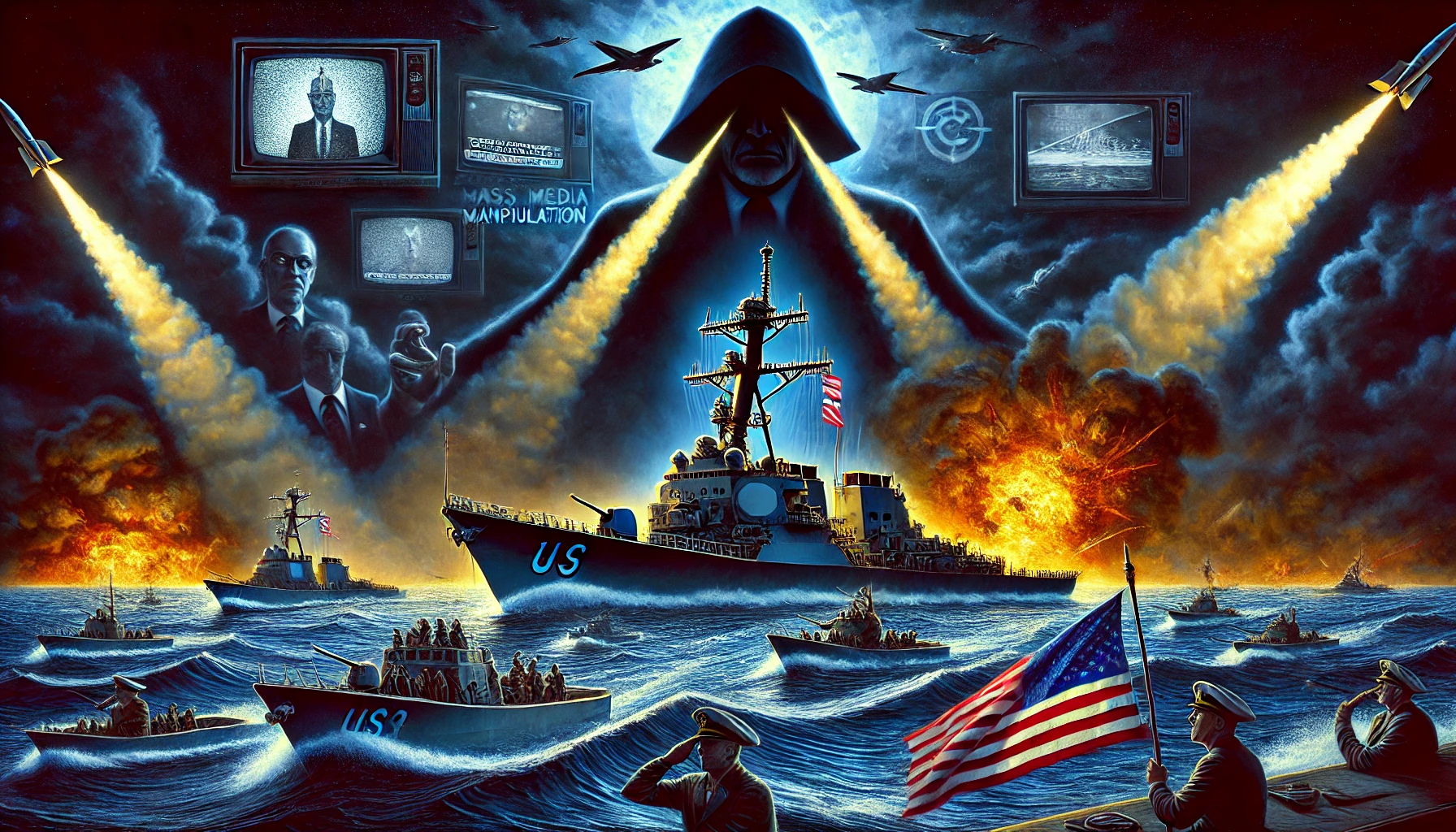Conspiracies, False Flags, and U.S. Escalation in Vietnam
The Gulf of Tonkin Incident is one of the most controversial episodes in U.S. military history, marking the beginning of America’s full-scale involvement in the Vietnam War. However, over the years, conspiracy theories have emerged suggesting that the official narrative was either fabricated or manipulated to justify a military escalation. One of the key concepts tied to this theory is the idea of a false flag operation—an intentional act designed to deceive the public by making it appear as though an attack has been carried out by an enemy, thus justifying retaliation.
This article will explore the conspiracies surrounding the Gulf of Tonkin, the role of a false flag operation, and the broader ramifications for U.S. foreign policy.
What Happened in the Gulf of Tonkin?
On August 2, 1964, the U.S. Navy destroyer USS Maddox was allegedly attacked by North Vietnamese patrol boats in the Gulf of Tonkin. The Maddox returned fire, damaging several of the boats. Two days later, on August 4, the Maddox and another destroyer, the USS Turner Joy, reported a second attack by North Vietnamese forces. However, evidence has since emerged suggesting that this second attack may never have occurred. Despite the ambiguity, these events led to the Gulf of Tonkin Resolution, granting President Lyndon B. Johnson sweeping authority to escalate U.S. military involvement in Vietnam.
What is a False Flag Operation?
A false flag operation is a covert action conducted by a government or organization to create the appearance that another party, usually an enemy, is responsible for an attack or a provocative act. The term comes from naval warfare, where a ship would fly the flag of a neutral or enemy country to deceive opponents.
False flag operations are often used as a pretext for war or military intervention. By creating the illusion of aggression from an opposing side, a government can rally domestic support for conflict or justify otherwise unpopular military action.
Was the Gulf of Tonkin a False Flag Operation?
The theory that the Gulf of Tonkin Incident was a false flag operation has persisted for decades. This belief is based on several key factors:
1. The Non-Existent Second Attack
Evidence uncovered years later casts doubt on the occurrence of the second attack on August 4. Declassified documents, including those from the National Security Agency (NSA), reveal that no North Vietnamese boats were present during the alleged second encounter. Furthermore, some crew members of the Maddox and Turner Joy reported that their radars had malfunctioned, likely leading to false reports of incoming torpedoes.
This revelation suggests that the Johnson administration either knowingly exaggerated the incident or was eager to use a misreported event to push Congress into passing the Gulf of Tonkin Resolution. In this sense, the incident bears similarities to a false flag operation, as it created a justification for an already desired military intervention.
2. Pre-Existing Desire for Escalation
Many argue that U.S. military and political leaders were looking for a reason to escalate the conflict in Vietnam. In fact, the Pentagon Papers, declassified in the early 1970s, revealed that the U.S. had long been searching for an excuse to intensify its involvement in Southeast Asia. The timing of the Gulf of Tonkin Incident provided the perfect opportunity to do so.
3. Media Manipulation
The swift and uncritical acceptance of the official narrative by the media further fueled suspicions of a coordinated effort to deceive the public. The Johnson administration quickly presented the incident as an unprovoked attack on U.S. forces, which helped rally public support for increased military action in Vietnam. The lack of questioning or investigation into the events by major news outlets at the time lends credence to the belief that the U.S. government was controlling the narrative.
Ramifications of the Gulf of Tonkin Incident
The most immediate consequence of the Gulf of Tonkin Incident was the passage of the Gulf of Tonkin Resolution. This resolution effectively gave President Johnson the authority to deploy military forces in Vietnam without a formal declaration of war. As a result, by 1969, over 500,000 American troops were stationed in Vietnam, leading to a costly and controversial conflict that would last another decade.
In addition to the tragic human cost—58,000 American soldiers and millions of Vietnamese civilians lost their lives—the Vietnam War significantly eroded public trust in the U.S. government. The later revelation that the second Gulf of Tonkin attack likely never occurred added to the sense of betrayal felt by many Americans, particularly in the wake of the Pentagon Papers.
The incident also set a dangerous precedent for future U.S. interventions. By using ambiguous or exaggerated threats as a justification for war, the U.S. government has been able to bypass the traditional checks and balances required for military action. This same strategy would be used in later conflicts, including the wars in Iraq and Afghanistan.
Conclusion
The Gulf of Tonkin Incident remains a controversial and pivotal event in U.S. history. While the first attack on the USS Maddox was real, the second attack—widely discredited as a fabrication—opened the door for the U.S. to escalate the Vietnam War. Whether this was a case of miscommunication, deliberate deception, or a false flag operation, the incident highlights the dangers of unchecked political and military power.
For further reading and research, you can visit:
- NSA Archives on the Gulf of Tonkin Incident
- Gulf of Tonkin, Vietnam War – Britannica
- The Pentagon Papers (via National Archives)




